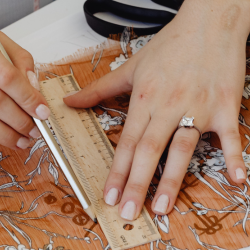Explore captivating stop motion animation examples! Get inspired and learn the tricks of the trade. Unleash your creativity!
Stop motion animation is a straightforward yet powerful technique for bringing the mundane to life. A keen eye for the smallest details combined with clever camera techniques results in mesmerizing moving visuals. Learn more about stop motion’s origins and the methods employed to capture its enchantment. Continue reading this article to learn why stop motion animation is important, the pros and cons of stop motion animation, stop motion animation characters, and more.
If you want beginners guide for animation. Click the link now!
Table of Contents
- What is Stop Motion Animation?
- What is Dragonframe Does
- Types of Stop Motion Animation
- How to Make a Stop Motion Animation
- Stop Motion Animation Techniques
- Old Stop Motion Animation
- Stop Motion Animation Characters
- Stop Motion Animation Online
- Pros and Cons of Stop Motion Animation
What is Stop Motion Animation?
Stop motion animation, often known as stop frame animation, is a type of animation in which actual objects are moved about the screen between each frame as the animation is being recorded. The illusion of movement is produced by quickly replaying the series of photos. Stop motion is comparable to 2D drawn animation (early Disney), although it uses real-world items rather than drawings.
Taking a snapshot of your items or characters, moving them slightly, and then taking another photo is the fundamental method of animation. The objects or figures seem to move on their own when the photographs are played again one after another.
Even if you aren’t aware of it, you constantly encounter stop motion animation in advertisements, music videos, television shows, and feature films. While it’s usual for people to associate stop motion with just one particular style, like clay animation, the truth is that stop motion methods may be used in a variety of cinema genres, including:
Capturing Stop Motion Animation
Film cameras were used to capture the earliest stop motion. Until their film was processed, animators could not see how their work appeared. To keep track of where their characters were and how far to move them, they employed surface gauges. The work was lost, and the animator had to start again if the animation was not smooth, if the set had been bumped, or if the lighting was poor.
Later, the 3D Animator may watch the most recent one or two frames and contrast them with the live footage from the camera thanks to special video devices. They were able to gauge the development of their animation thanks to this.
Using DSLRs for Stop Motion Animation
Corpse Bride, which was shot in 2005 using a Canon EOS-1D Mark II, is the first stop-motion feature film to be recorded with a digital still camera. Live view, a function that allows the camera to stream a picture via the lens, was absent from early DSLRs. So, to give the video aid, the studio had to employ a second camera.
DSLRs with a live view were released by Canon and Nikon in 2007. Since then, most feature films, music videos, broadcast television program, and advertisements that incorporate stop motion were shot in high definition using DSLRs.
The first stop motion software program to support both the Canon 40D and the Nikon D90 DSLRs with a live view was Dragon 1.0 (the first release of Dragonframe), which was made available on March 1, 2008. Because of this, the animator was able to get a through-the-lens preview of their animation as they worked.
What is Dragonframe Does
The best frame-grabbing program for stop motion and time-lapse photography is called Dragonframe. Dragonframe is the main hub for gathering and organizing high-resolution frames from your camera, and it gives the animator video aid tools using the live view of a compatible digital camera.
With features like step-to-live, onion skinning, auto-toggling, and sketching (virtual grease pencil), Dragonframe is a great frame grabber. By expanding the capabilities of its stop motion software beyond frame snatching to offer a complete set of production tools, Dragonframe has revolutionized the field of stop motion software.
The following tools are available through Dragonframe’s five workspaces:
- Tools for editing, collecting frames from videos, and animation
- Tools for checking focus, adjusting exposure, and ensuring you get the ideal photo
- Totally automated lighting with the DDMX-512
- Reading tools with integrated audio and dialogue tracks
- Edit advanced camera movements fast using a multi-axis motion editor.
Types of Stop Motion Animation
Mention below is the types of stop motion animation:
Object Motion
No budget? No problem – grab whatever’s handy and bring it to life.
Examples: The Humpty Dumpty Circus (1898)
Claymation
Sculpt characters and props from modeling clay to create strange new worlds.
Examples: Morph, Wallace & Gromit
Pixilation
Bring live actors into the mix – and prepare to hold that pose for still photography.
Examples: Hôtel électrique (1908)
Cutout-Motion
Craft your cast and their surroundings from paper and shoot top down in two dimensions.
Examples: The Spirit of Christmas (Matte Stone and Trey Parker)
Puppet Animation
Push the aesthetics of your project even further and create sophisticated puppets to pose in the frame.
Examples: Coraline, Kubo ,and the Two Strings
Silhouette Animation
Add a backlight to your cut-outs and bring secretive shadow-play into the mix.
Examples: The Adventures of Prince Achmed (1926), Papageno (1935)
To know more about it you can the book ‘The Advanced Art of Slow Motion Animation’ by Ken Priebe.
How to Make a Stop Motion Animation
You won’t need access to pricey equipment, unlike the pioneers of the genre, to mount your own stop motion film production.
What You’ll Need for Stop Motion Animation
You’ll need the following to begin making your own miniature works of art:
Digital Camera: Any camera will suffice, even one on a smartphone, albeit the better the camera, the better. Also, it’s important that you also have the best web camera for stop motion animation.
Stand/Mount: You must install the camera, so it stays absolutely steady during the manufacturing process, which is a crucial component of the operation. Fortunately, they are inexpensive.
Editing Software: Once more, your phone will work in a hurry, but you’ll need video editing software that can organize your photos and send the finished product as a single file.
Objects to Film: Grab a few props and start filming, whether you’re creating elaborate setups like Reiniger or simply giving everyday things life.
Stop Motion Animation Techniques
Given how easily stop motion animation is produced, the animator’s unique approaches to their chosen topics are what bring life to the screen. The creation of many stop-motion filmmaking methods gives the medium fresh vitality throughout cinematic history.
- Object motion gives life to commonplace items, which means that it doesn’t require the artist to start from fresh. The Humpty Dumpty Circus is regarded as the first instance of object motion in a living organism, despite the fact that the show’s animal stars were toys and not raised especially for the occasion.
- Claymation is the sculpting and frame-by-frame tinkering of figures or objects made of clay. The multi-Oscar-winning, cheese-loving Wallace & Gromit combo, other Aardman Animations productions, and the yearly Stateside holiday specials created by Rankin/Bass are the most well-known uses of this style.
- Pixilation uses the same approach on people, who undoubtedly have aching muscles after each shot since they are required to make such little motions in between each frame. The music video for The Maccabees’ song “Latchmere” is one instance of pixilation that caused a stir in the British music industry.
- Cutout-Motion is the process of animating the motions of two-dimensional objects, often made of paper. South Park’s notoriously foul-mouthed pilot episode was made in cutout motion, a tedious method that co-creator Matte Stone called “hell on this earth” and which, happily, has been improved into a system they like.
- Puppet animation is another specialized form of stop-motion animation that involves the design and control of puppets to create a particular endearing animated look. Most notably, Laika, the production company behind the critically acclaimed films Coraline and Kubo and the Two Strings, uses it in their work.
- Silhouette Animation creates captivating action frames by combining the use of cutout motion with deft shadow play. It was invented by European studios in the 1920s, but Lotte Reiniger, whose prodigious career includes more than 70 silhouette animation films repeating classic folk stories, is arguably most known for using it.
Old Stop Motion Animation
Almost as long as the history of film itself is the history of stop motion animation. The Humpty Dumpty Circus, a short film shot in 1898 utilizing dolls with jointed limbs to mimic the actions of circus acrobats, was the first stop motion movie ever created. Sadly, no confirmed stills or fragments of this missing movie have yet been found. Fun at a Bakery Shop, which was released in 1902, is one of the first stop-motion films still in existence. It employs a “lightning sketch” variation of claymation to animate a face made of dough.
Stop Motion Animation Characters
Mentioned below are some stop motion animation characters:
- King Kong – King Kong (1933)
- Gwangi – The Valley of Gwangi (1969)
- The Skeletons – Jason and the Argonauts (1963)
- Cyclops – The Seventh Voyage of Sinbad (1958)
- The Other Mother – Coraline (2009)
- Jack Skellington – The Nightmare Before Christmas (1993)
Stop Motion Animation Online
The best approach to picking a platform is usually based on whether or not you already have the video you plan to use in a stop motion animation. Additionally, the number of photographs or video clips you intend to send to an online stop motion creator might affect how long it takes you to finish a project. Mentioned below are a few stop motion animation online sites that will help you.
- Kapwing
- Clideo
- Stop Motion Animator
- Cloud Stop Motion
Pros and Cons of Stop Motion Animation
Below are some pros and cons of stop motion animation:
Pros: If you utilize toys, the animation’s visuals will appear to be rather engaging because they mimic real life! All assets are tangible, and other than clicking a button to take a picture, there aren’t many tools to learn.
Cons: If the toys are not posed appropriately relative to the previous frame, posing them frame by frame may be tiresome and inaccurate. When it comes to stop-motion animation, you need to be a little more inventive in your implementation since toys posing to fly or leap may be challenging as well. Industry: Occasionally, stop-motion animation is used in movies. Stop-motion films include Frankenweenie and Corpse Bride, for instance.
Want to Learn More about Animation? Join our Diploma in Animation and VFX program and build a successful career.
























